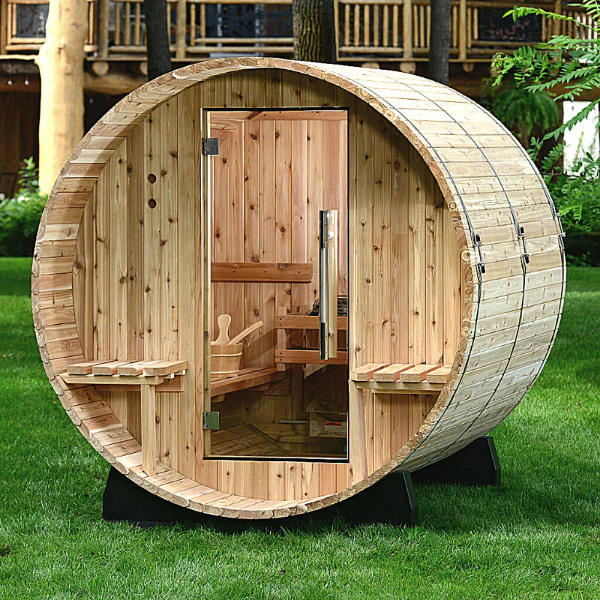
Cameron
Table of Contents

Nowadays, it is generally accepted that people have used saunas for centuries to detoxify, unwind, and enhance their general health. Particularly beneficial are dry saunas, which increase circulation, lower stress levels, and aid in weight loss.
In general, sitting in a heated room made typically of wood, where the temperature can range from 149°F to 194°F and the humidity is very low, is always a must for a dry sauna session.
Low humidity keeps the air breathable while the heat makes the body sweat, which can aid in the release of toxins and impurities.
This comprehensive guide will cover all the information you need about using a dry sauna, including its advantages, potential risks, and some of the best practices.
So, the only thing you have to do is to stay tuned until the of the article to find everything out!

What is a Dry Sauna?
For those who may not know, the dry sauna is one of the several types of saunas that exist nowadays.
A dry sauna is a dry heated room with very little humidity. They are typically made of wood and heated by a wood-burning stove or an electric heater.
Sweating is brought on by the temperature, ranging from 65 to 90 degrees Celsius or 150°F to 195°F. The increased circulation, lowered stress levels, and weight loss are all benefits of the heat. The air is kept breathable thanks to the low humidity.
The air is dryer in a dry sauna because it doesn’t produce steam or moisture like a steam room does. Gyms, spas, and some homes all have dry saunas.
What is the difference between a dry sauna and an infrared sauna?
Many people around the world wonder what are the differences between a dry sauna and an infrared sauna. So, it is important to include some of the main differences to sort everything out.
The main difference between a dry sauna and an infrared sauna is the method they produce heat to warm the people. The dry sauna uses conventional heaters and the infrared sauna uses infrared lights.
In a dry sauna, the heat is produced by a conventional heater, which warms the air, the furniture inside of the sauna, and the walls in the whole room. The temperature can vary from 158 to 212 degrees Fahrenheit, and the low humidity keeps the air dry.
On the other hand, an infrared sauna instead of warming the air around you uses infrared heaters to emit infrared light, which is directly absorbed by the body.
This implies that even though the temperature inside an infrared sauna is normally lower than that of a conventional dry sauna—typically ranging from 113°F to 140°F—you will still perspire because of the direct body heat.
|
Primary Rating:
4.6
|
Primary Rating:
4.7
|

What Does a Sauna ACTUALLY Do?
Sessions in the sauna can have a variety of positive effects on one’s health benefits and emotional well-being. So, here are some benefits that saunas actually do:
-
Sauna sessions can improve blood circulation.
-
Sauna sessions can relieve stress and promote relaxation.
-
Sauna sessions can alleviate pain associated with various conditions.
-
Sauna sessions can improve skin health.
Also, these are just some of the most beneficial aspects that saunas can provide for people who need them the most to improve their overall health, recover from injuries or just relax after a long day.
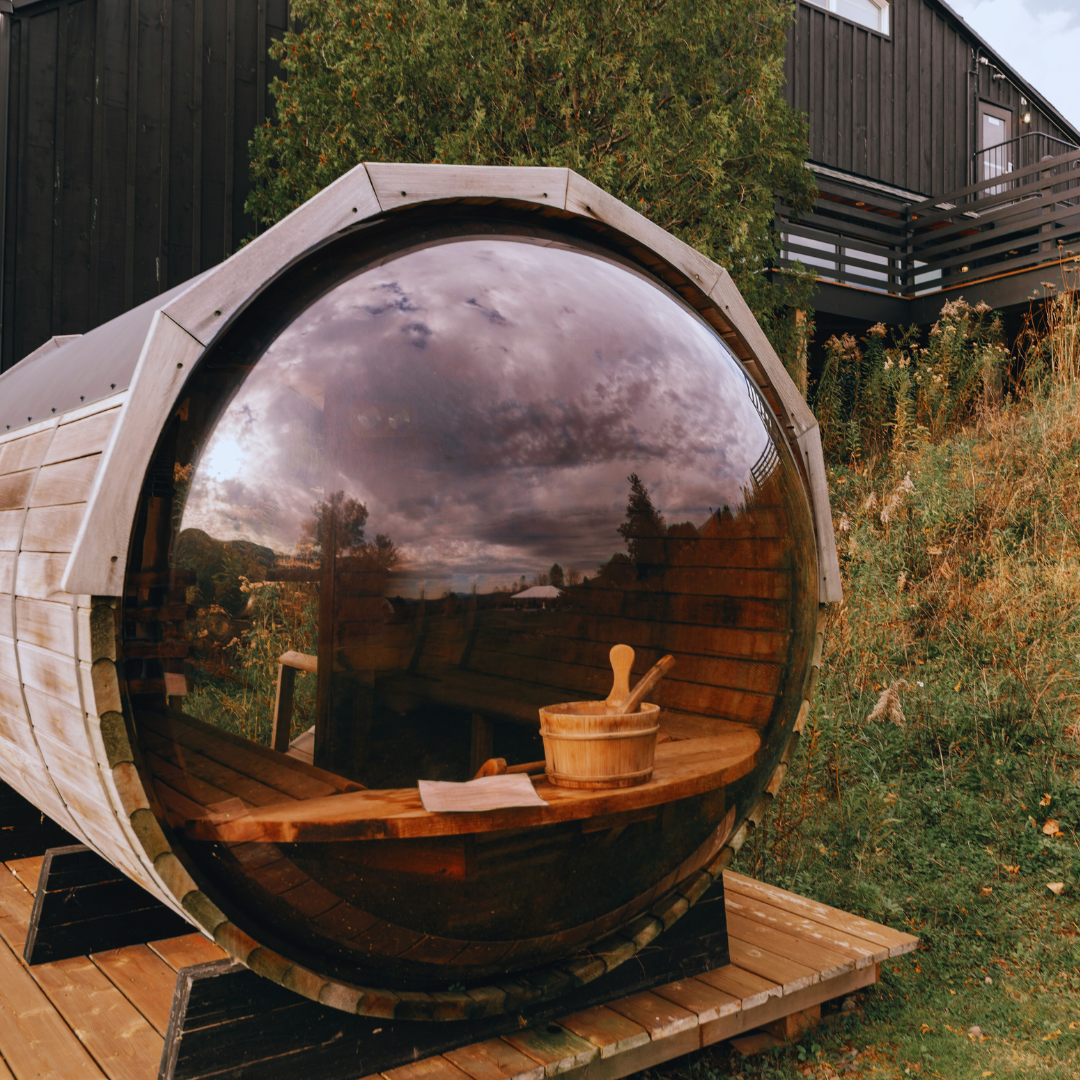
What types of Saunas are there?
Saunas come in a variety of varieties, each with special features and advantages. Here are a few of the most popular sauna designs:
-
Traditional Finnish Sauna: This is the most popular style of sauna. The traditional steam sauna heats rocks using a wood-burning or electric heater. Following that, water is poured over the rocks to produce steam and raise the humidity, creating a hot, steamy environment.
-
Infrared Saunas: They heat the body directly using infrared light rather than by heating the air. It is a soothing and healing sensation since the heat is more delicate and penetrates the body more deeply.
-
Steam Room: A steam room is like a traditional sauna, but it uses moist heat rather than dry heat. The humidity is much higher than in a sauna, and the temperature is usually between 40° and 50° degrees.
-
Portable Sauna: A portable sauna is a more compact, cost-effective option that is simple to set up and use at home. These saunas frequently use infrared technology and are available in a range of different shapes and sizes.
-
Sauna in a barrel: A barrel sauna is a distinctive and beautiful type of sauna that is typically made of wood. The rounded design makes for effective heating and is frequently used outside.
-
Smoke Sauna: A traditional Finnish sauna that is heated by a wood-burning stove is known as a smoke sauna.
In a few words, there are a couple of different saunas with several ways to heat a room and make people sweat, calm down and relax.

What is an Infrared Sauna?
An infrared sauna uses infrared light to directly heat the body, unlike traditional steam saunas which heat the air of the sauna room.
This way, modern saunas like the infrared ones provide a more gentle and relaxing experience.
Elevate your wellness routine and enjoy the healing power of full-spectrum infrared therapy. Click to order yours today and transform your home into a luxury spa retreat!
Benefits of Saunas for People Who Workout
People who regularly exercise can benefit greatly from saunas. The following are some advantages of saunas for athletes:
Increases Muscle Recovery: Your muscles might feel sore or tight after a workout. By enhancing blood flow and circulation, saunas can hasten muscle recovery and lessen soreness.
Reduces Inflammation: Strenuous exercise can increase the body’s inflammatory response, which can cause pain and discomfort. By boosting blood flow and encouraging relaxation, saunas can aid in the reduction of inflammation.
Enhances Metabolism: By raising heart rate and calorie burn, saunas can aid in enhancing metabolism. People who are trying to lose weight or maintain a healthy weight usually find this to be particularly helpful.
Enhances Endurance: The regular use of a sauna can help to improve athletic performance and endurance. This is because muscles are receiving more blood flow and oxygen, which can enhance overall physical performance.
Encourages Relaxation: Physical and mental stress can be brought on by exercise. Saunas can aid in promoting relaxation and lowering stress levels, both of which can improve general health and well-being.
However, besides all the benefits above, when using a sauna, it’s important to exercise caution because high temperatures can be harmful to some people, including children, pregnant women, and people with certain medical conditions.
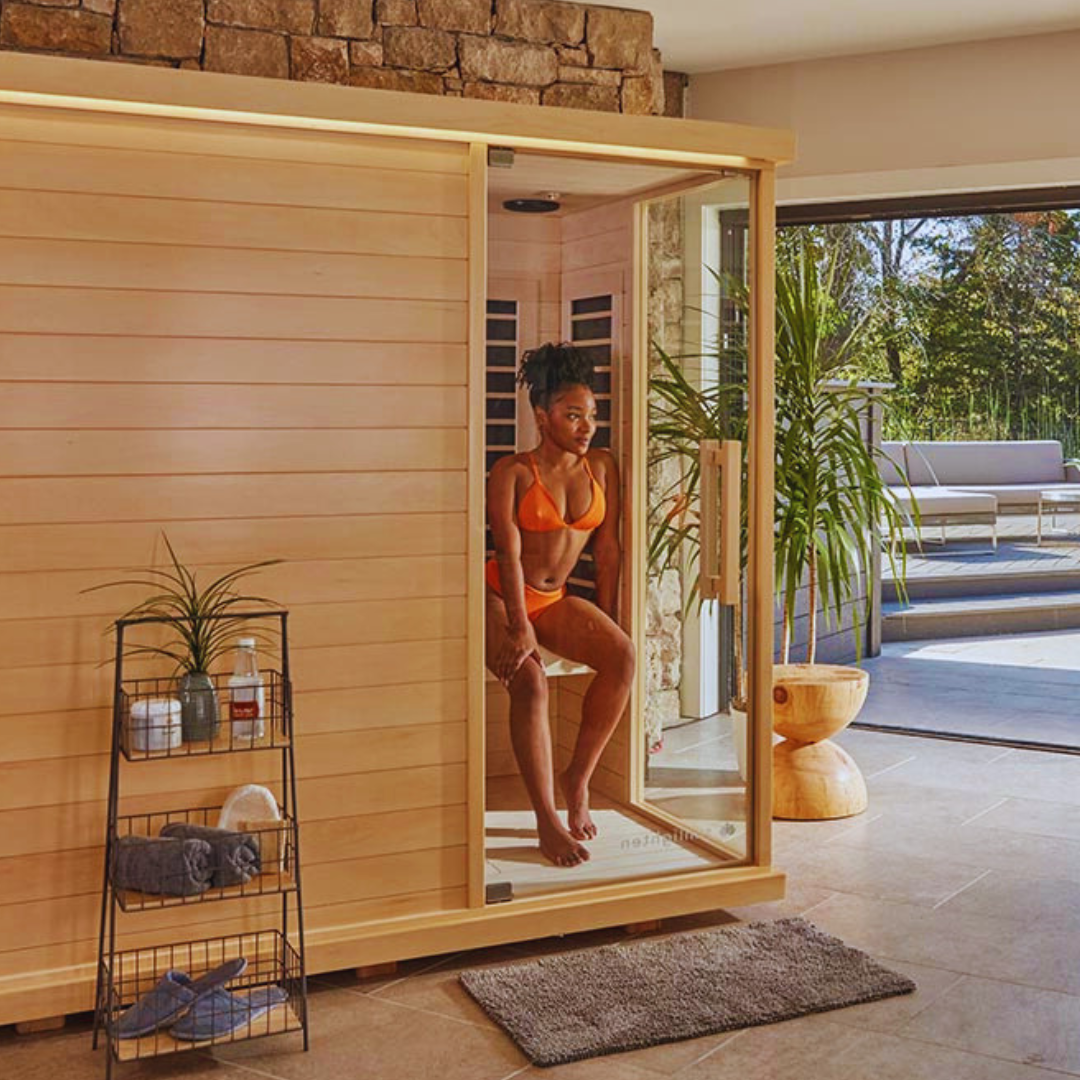
Home Saunas: Are they worth buying or should I just go to a Gym?
For those who want to enjoy the benefits of sauna therapy in the comfort and privacy of their own home, home saunas can be an excellent investment. However, whether they are worthwhile purchases is dependent on your personal preferences, lifestyle, and budget.
Below we will analyze some of the most important things like the benefits and drawbacks to think about before deciding whether to buy a home sauna or go to the gym:
Benefits of having a Sauna at Home vs Having to go to a Gym
Having a sauna in the comfort of your home seems to be all the rage right now but is it totally worth it? Well, that truly depends on a number of things. Two of the biggest factors is your budget and how much you plan on using it. Here is a list of pros and cons of having your own sauna at home:
Pros of having my own
-
Convenience: Having a sauna in your home allows you to use it whenever you want without having to travel to a gym or spa. This is especially useful if you have a hectic schedule or do not have easy access to a gym or spa.
-
Save money: Paying for regular sauna treatments at a gym or spa can save you money over time. Furthermore, having a sauna at home can raise the value of your property, making it a worthwhile long-term investment.
-
Anytime access: Having your own home sauna, allows you to have your own sauna session any time you want without limits. This is a great advantage because you don’t need to worry about the remaining time like when you pay for a sauna session.
Cons of having my own
-
Space: Home saunas can take up a lot of space in your home, you’ll need to make sure you have adequate area for one. Additionally, you may need to install additional ventilation or electrical systems to ensure the safety and functionality of your sauna.
-
Cost: Home saunas can be costly, particularly if you choose a high-end one. Also, if you don’t have the right budget for it, it is better to stick with gym saunas.
-
Maintenance: A sauna, like any other home item, requires routine maintenance to ensure optimum operation. This can include cleaning, and replacing parts as needed.
In summary, whether you buy a home sauna or go to the gym is a matter of personal preference. In the long term, it would be better to invest in a home sauna but if you want to enjoy a sauna session every once in a while it is better to choose gym saunas.
Redwood Outdoors makes the USA’s best outdoor saunas and indoor saunas. Their barrel saunas are made of top-quality cedar and thermowood that is 100% natural. We have you covered with a large selection of home saunas, backyard saunas, and at home sauna kits. Whether a personal sauna or shared with family, Redwood Outdoors has a sauna to meet your needs.

Benefits of Infrared Saunas vs. Traditional Saunas
Traditional saunas and infrared saunas both provide significant health benefits but in slightly different ways.
Here are some advantages of infrared saunas over regular saunas:
-
Lower Temperature: Infrared saunas run at a lower temperature than traditional saunas, often ranging from 120-150°F (48-65°C) to 160-200°F (71-93°C). Infrared saunas are usually more comfortable for people who have difficulty handling the high heat of regular saunas.
-
Deeper Tissue Penetration: Infrared saunas use infrared light to directly heat the body as opposed to the air around you. This has the potential to enter deeper into the body, boosting cleansing and other health advantages.
-
Sweating: Both forms of saunas encourage sweating, which can aid in the elimination of pollutants and the improvement of circulation. In general, people usually tend to produce more sweat in infrared saunas rather than in traditional saunas.
-
More soothing: Because infrared saunas do not produce the same high heat and humidity as regular saunas, they are typically considered more soothing. This can help you relax and enjoy your sauna experience to the maximum.
-
Improved Skin Health: Because deep tissue penetration can assist boost blood flow and oxygenation to the skin, infrared saunas are especially good for enhancing skin health. This has the potential to increase collagen formation, enhance skin tone, and diminish the appearance of wrinkles and fine lines.
Infrared Sauna’s Heat vs Traditional Dry Sauna Heat
Heat is created differently in infrared saunas and ordinary dry saunas, which alters how the heat feels.
Traditional dry saunas generate heat using heated pebbles, whereas infrared saunas utilize infrared heaters.
Traditional dry saunas are generally hotter than infrared saunas, with temperatures ranging from 160°-200°F (71-93°C). Infrared saunas, on the other hand, normally run at temperatures ranging from 120° to 150°F (48 to 65°C).
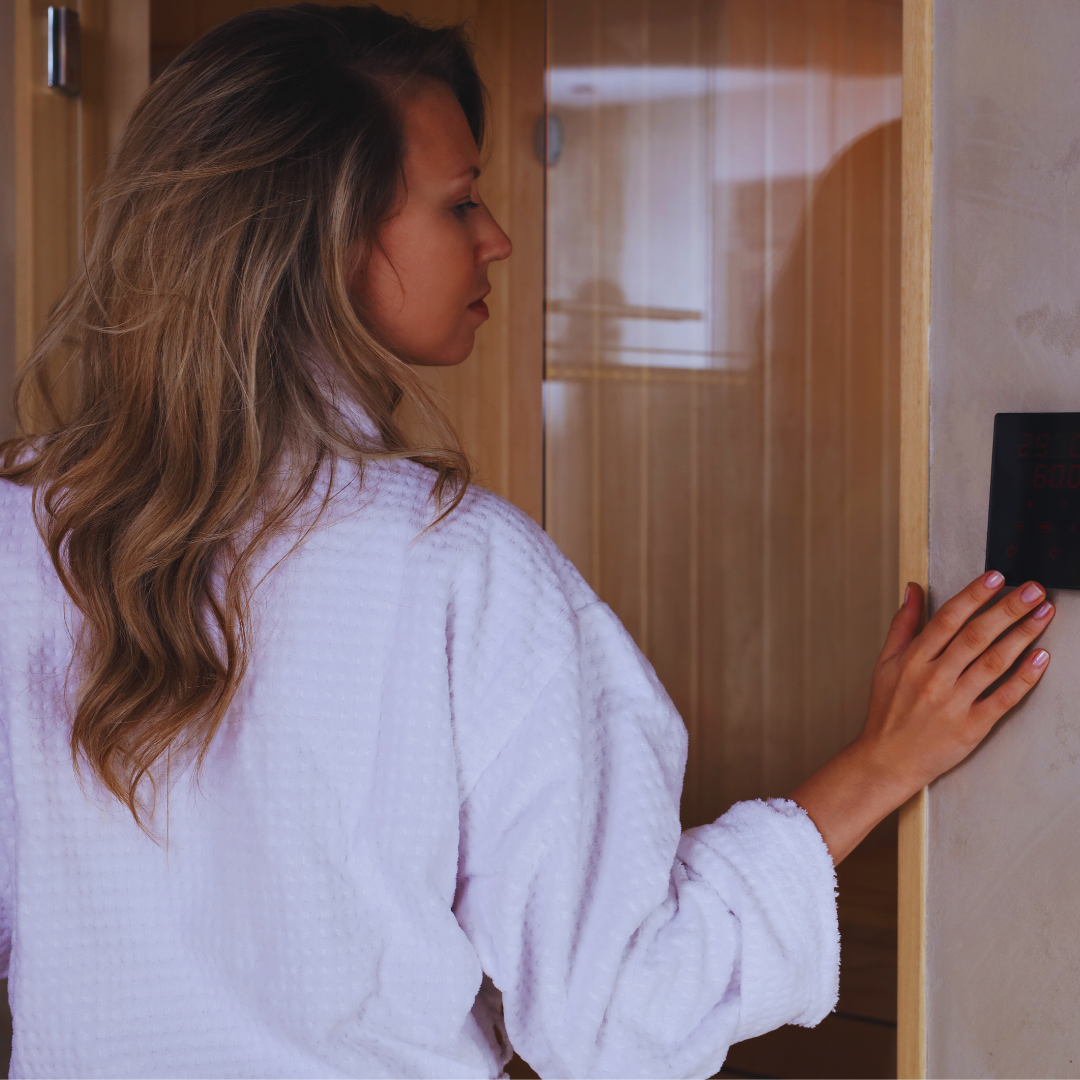
The heat in infrared saunas, on the other hand, can feel more severe since it penetrates the body more deeply. Traditional saunas produce steam by pouring hot water over heated rocks, resulting in a humid environment.
In contrast, because infrared saunas do not produce steam, the air is dry. This can make infrared saunas more comfortable for folks who struggle to tolerate the excessive humidity of regular saunas.
What to Expect From a Sauna Session
A sauna session can be a refreshing and peaceful experience, but you should know what to anticipate before you go. Here are some things to remember:
-
Remove clothing: You will be expected to remove your clothing and wear only a towel or a swimsuit in most saunas. Some saunas have separate male and female zones, while others are co-ed.
-
Strong heat: The heat in a sauna can be strong, so pay attention to your body and don’t push yourself too hard. If you are a beginner it is advised to start with a lower temperature and then gradually increase if you feel comfortable. Drink plenty of water before, during, and after your sauna session to stay hydrated.
-
Take your advised time: A usual sauna session lasts 10-20 minutes, however, you can stay longer if you want to. It’s always necessary to listen to your body and avoid spending too much time in the sauna, as this can be dangerous and negative to your body.
-
Relaxation: Sauna sessions are intended to be relaxing, so take your time to unwind and enjoy the experience. Bring a book or a magazine to read, or simply close your eyes and concentrate on your breathing and enjoy your sauna session.
Overall, sauna sessions provide several health benefits such as better circulation, cleansing, and stress alleviation. However, keep in mind that saunas are not a replacement for medical therapy.

Health Benefits of Spending Just 30 Minutes in the Sauna
We’ve all heard about the numerous advantages of sauna bathing, but what about a 30-minute sauna bath?
According to a sauna research study by DeccanHerald.com back in 2018, a 30-minute sauna session can provide more health benefits than previously thought.
So, let’s look at the potential benefits of a 30-minute sauna bath, such as the effects on heart health, weight loss, and mental health.
Improving Heart Health
Sauna bathing has the potential to improve heart health, which is one of its most substantial advantages.
Regular sauna use has been shown in studies to help lower blood pressure, improve circulation, and reduce the risk of heart disease.
Loss of Weight
On some occasions, sauna sessions really help with weight loss in addition to boosting heart health. The high temperatures in a sauna can stimulate sweating, which can aid in the elimination of toxins and extra water weight.
Furthermore, sauna use has been known to boost metabolism and calorie burn, which benefit weight loss efforts.
Mental Health
Sauna bathing can be also beneficial to one’s mental health. A sauna’s heat and relaxation can help relieve tension and anxiety while also promoting a sense of serenity and relaxation.
In addition, the release of endorphins during a sauna session boosts mood and minimizes depressive symptoms.

Are there risks to a dry sauna vs an infrared sauna?
When it comes to the risks of traditional and infrared saunas, there are a lot of things that need to be mentioned and try to be aware of them.
To begin with, one potential danger of dry saunas is dehydration. Because as you know, the air in a dry sauna is very dry, it can produce excessive sweating and fluid loss, which can lead to dehydration if not enough fluids are consumed before.
Drinking plenty of water before, during, and after a sauna session can help to reduce this risk.
In addition to that, they do not heat the air as much as dry saunas, infrared saunas are generally thought to be safer in terms of dehydration risk.
However, there is some evidence that infrared saunas could be more dangerous than dry saunas in terms of heat-related sickness, such as heat exhaustion or heat stroke.
This is because infrared saunas directly heat the body, causing a faster rise in core body temperature than dry saunas.
Another potential risk of sauna use, regardless of type, is skin irritation or burns. This can happen if you come into contact with hot surfaces or stay in the sauna for an extended period of time.
To reduce all the risks we mentioned above, it is important to follow the manufacturer’s instructions for your sauna, drink plenty of water beforehand, and never stay in the sauna for longer than recommended.

Which is better Dry or Steam Sauna?
Dry saunas and steam saunas have different advantages and disadvantages that we have already seen before.
However, which is a better option, a dry or a steam sauna?
Dry saunas are hotter and can help relieve muscle pain, whereas steam saunas are moisturizing and can help with respiratory problems which is a better option for some people.
Personal preference and individual health concerns ultimately determine which option is chosen.
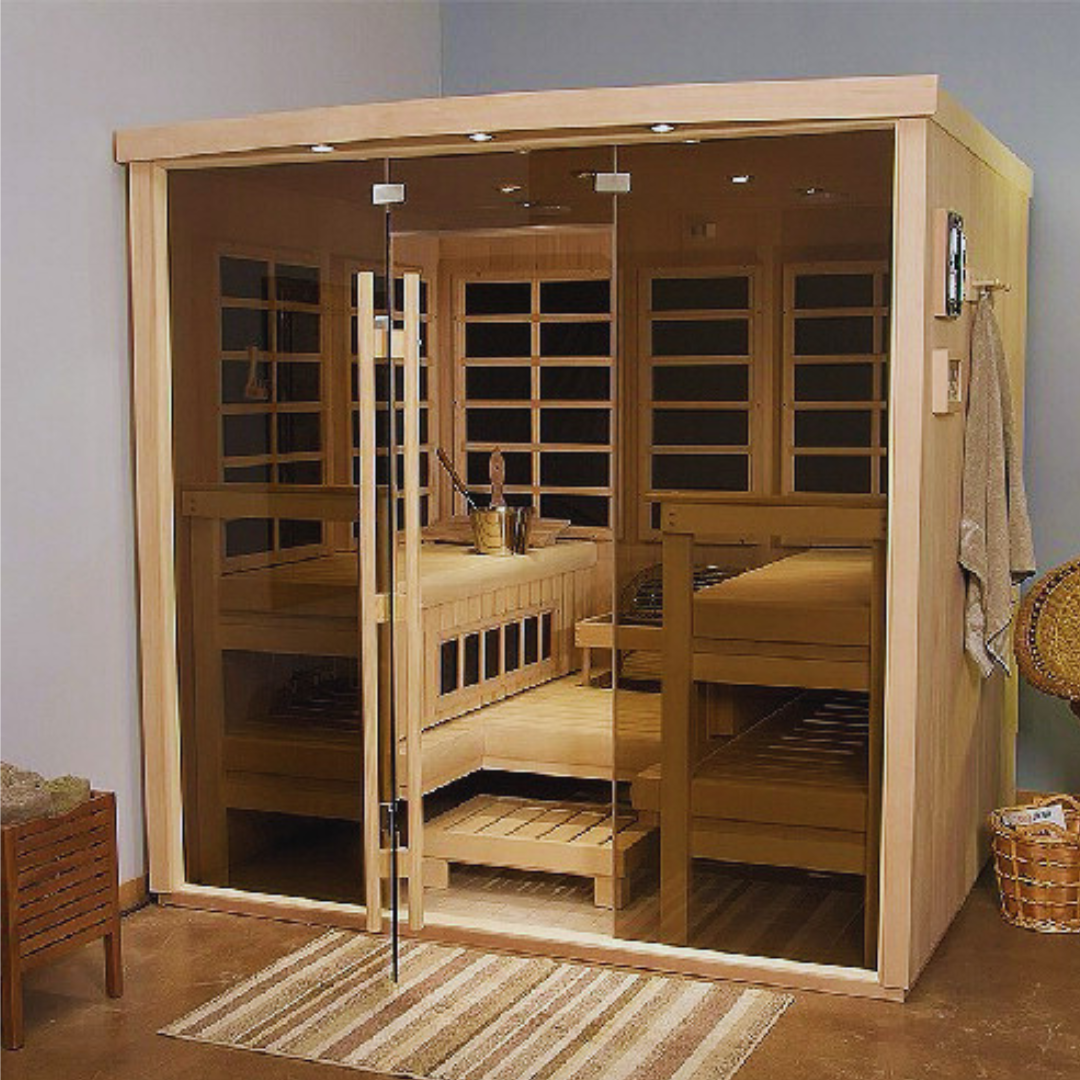
Conclusion
Summing up, dry sauna sessions can provide a variety of health benefits, ranging from improved cardiovascular health to stress reduction and pain relief. However, staying hydrated, limiting session time, and consulting with a healthcare professional if you have any preexisting medical conditions are all important precautions to ensure a safe and comfortable experience. Dry sauna sessions, with proper care and attention, can be a valuable addition to your wellness routine.
Are you looking to upgrade your home gym by adding a sauna? We have you covered! Find top rated Home Saunas here.

